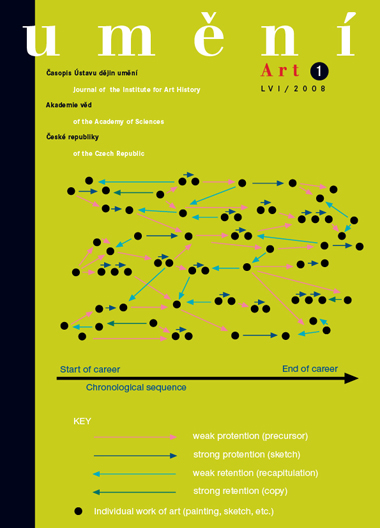Martin Mádl
Giacomo Tencalla and Ceiling Painting in 17th-Century Bohemia and Moravia
After the midpoint of the 17th century, although construction was on an upswing, the level of artistic quality of ceiling painting in Central Europe was not high. An exception was represented by the production of the painter Carpoforo Tencalla, who worked for the Imperial Court and for the high nobility and prelates in several Central European countries. In recent decades, several cycles of paintings in Moravia and Bohemia have also been attributed to Carpoforo Tencalla. These cycles are directly dependent on Carpoforo's models, but they are manifestly of a lower quality. Until now this has been explained by the involvement of the master's assistants or by later restoration work. We believe, however, that Carpoforo is the author of only a few paintings in Moravia, and his presence in Bohemia cannot be documented. The author of some of the paintings in the pavilion of the Flower Garden in Kroměříž and on Svatý Kopeček (Holy Hill) near Olomouc and of the cycles of paintings at chateaus in Bohemia in Lnáře, Roudnice nad Labem, Milešov, Libochovice, Trója in Prague-Bubeneč and at certain other places was in all probability Carpoforo's relative Giacomo Tencalla. He had studied with Carpoforo, but he worked in Bohemia independently on the decoration of residences that were designed by Francesco Caratti (Tencalla's relative and neighbor from Bissone) and his successor Antonio Porta. Giacomo's paintings can be characterized as lacking invention and as being multiple copies of Carpoforo's far better paintings. It is even possible that some of Giacomo's works repeat motifs of the decorations, now lost, of Leopold's wing of the Hofburg in Vienna. Giacomo Tencalla worked for the bishop Karl II von Liechtenstein-Castelcorn, princes Lobkowicz and Dietrichstein and for the counts Černín, Slavata, Kaplíř and Šternberk. Most of them were satisfied with mediocre, unoriginal ceiling paintings in their residences from the hand of an undistinguished imitator.
Full-text in the Digital Library of the Czech Academy of Sciences:
https://kramerius.lib.cas.cz/uuid/uuid:5da4db4f-eac7-fc74-3b94-cb4a1afbd453
< back

